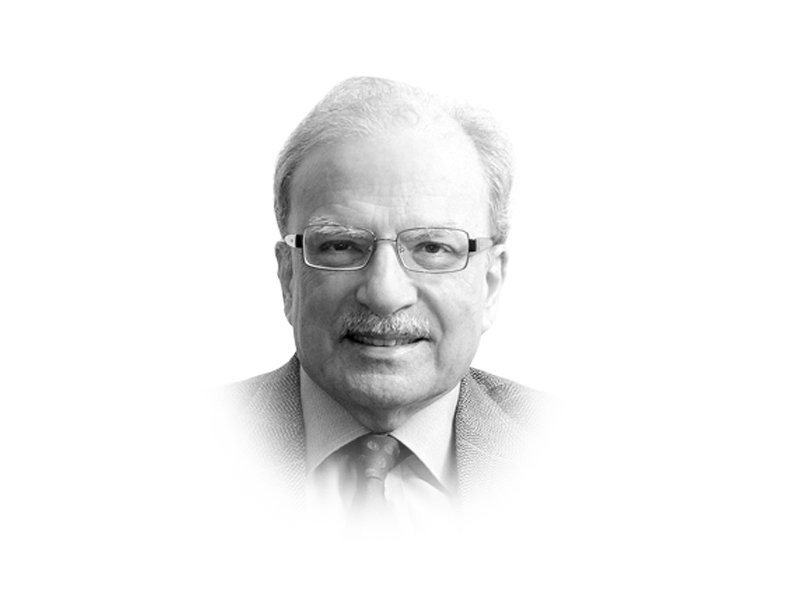By Shahid Javed Burki
Published in The Express Tribune on March 14, 2022
Pakistan spent March 8, 2022 observing women’s day as was done by most countries around the globe. It is only four years ago, when some Pakistani women took to the streets to demand better treatment in their homes, in educational institutions, and at the workplace. Women in Karachi took the initiative to bring out their friends and relatives to come and start demanding better rights for women. Although the reaction to the first women’s march was relatively low key, there was some condemnation from Islamic extremists who labeled the participants as “anti-religion” even “vulgar”.
“What started as a single demonstration to observe International Women’s Day has become an annual lightening rod for religious conservatives across Pakistan, who have been adopting harsher attitudes toward women female activists,” wrote Zia ur-Rehman, a Karachi-based journalist who covers Pakistan for his newspaper, The New York Times. “Women planning to join the Aurat Marches, as they are called — Urdu for ‘women’s march’ — have faced countless threats of murder and rape, along with accusations that they receive Western funding as part of a plot to promote obscenity in Pakistan.” Many Pakistani opinion-makers are always prepared to blame the West if things that are not going in what they believe is the right direction.
Pakistani women, not unlike women in other parts of the world, have woken up to the important fact that they will need to get actively involved in improving their status in society. In the process they will need to educate the males in society who must begin to recognise that keeping women backward will keep the country backward. This is even more urgent now than in the past as a result of developments in neighbouring Afghanistan. The Taliban government in Kabul, which is still struggling to establish itself and save the country from an unprecedented humanitarian crisis, has focused considerable attention, as expected, towards defining its approach towards the country’s women. In spite of international pressure, it has made little effort to convince the skeptical world that it will bring women closer to men in terms of social and economic development. Its record when it governed last — in the period 1996 to 2001 — is not encouraging.
No country has made economic and social progress without empowering its women. China and Bangladesh offer good examples of how women have developed their societies. China started on this route in the early 1950s and Bangladesh in the 1970s and 1980s. Chairman Mao Zedong’s Communist Party took control of China in October 1949. One of his first reform acts was to ban the binding of women’s feet, something upper class Chinese had done before the Communists took power. By keeping feet small, women’s mobility was highly restricted. When I first visited China in the summer of 1965, I saw many old women barely able to move on their small but deformed feet. Mao’s other reforms also affected women. He brought universal primary education and healthcare to the country’s population. When Deng Xiaoping became the supreme leader in 1976 following the death of Mao, he opened China to the world outside. China then had a workforce that had more women than men to launch the country on the route to rapid economic progress, that, in terms of the rate of growth of the economy transformed itself. Its growth and rate of change had no historical precedence.
Bangladesh became independent in 1971, breaking away from Pakistan of which it had been the eastern part for a quarter century. In doing so, it inherited one-half of the quota under the Multi-Fiber Agreement, the MFA, which regulated the export of cotton products to the developed world. But the new country did not grow cotton or manufacture cotton yarn. Foreign investment from mostly East Asian countries rushed in to take advantage of the access Bangladesh had suddenly gained to the markets in the United States and Western Europe. Those who invested in developing Bangladesh’s garment industry had experience of operating such enterprises in their own countries and knew that women were better workers than men in producing garments. This opened opportunities for women which they rushed in to exploit. More than 80 per cent of the workforce was made up of women which allowed them to become largely independent of their spouses. One immediate consequence of this was a sharp decline in the country’s birth rate. At the time of independence, Bangladesh had a larger population than Pakistan. Now it has 165 million people, 45 million people fewer than Pakistan.
Comparing the situation of women in Pakistan to that in Bangladesh, India and Sri Lanka, there are some measures that show that women in Pakistan are doing as well — if not better — than those in other South Asian nations. To use a couple of measures to compare the situation in Pakistan with other South Asian nations: 65 per cent of girls get married before they reach the age of 18 in Bangladesh, 31 per cent in India but only 24 per cent in Pakistan. Weight at birth is the lowest in Bangladesh but highest in Pakistan. In a study I did while I was spending summers as a Senior Visiting Fellow at the National University of Singapore’s Institute of South Asian Studies, I was surprised to discover that the proportion of girls entering primary schools and completing the full term was higher in Pakistan than in India and Bangladesh. This was the case because of the involvement of the private sector in education. It did not happen because of public policy or public sector’s endeavours. A large proportion of thousands of schools and colleges in the private sector are the result of initiatives by women. This is the case not only in urban areas but also in villages.
However, I don’t want to leave the impression that Pakistan doesn’t need to do much more to have women contribute to the country’s economic and social development as they did in what have come to be known as the miracle economies of East Asia. There are several areas that need attention by both the government and the private sector. They include violence against women in the country — a subject that is receiving a fair amount of media coverage these days — providing women education, healthcare and employment in the modern sectors of the economy. I notice that women have an active presence in the privately run commercial banks. The Lahore-based Burki Institute of Public Policy plans to do some serious work on furthering our knowledge of women’s situation. To this end, we will devote our next annual report that would explore some of the issues relating to women’s development and also the opportunities they have before them to improve their situation. It is our belief that by the adoption of appropriate policies, women’s situation can be measurably battered and that, in turn, would advance Pakistan’s economic and social development.





